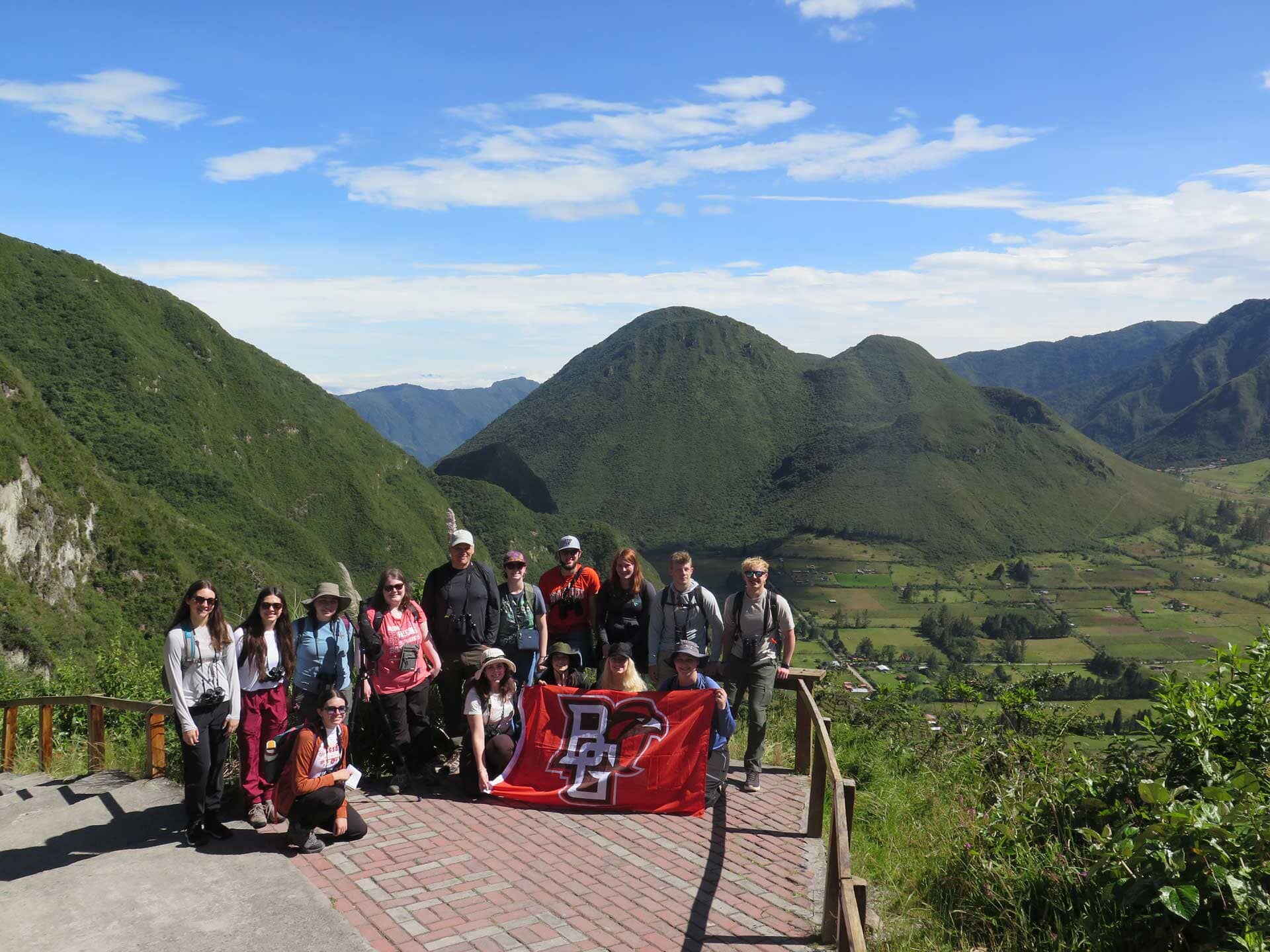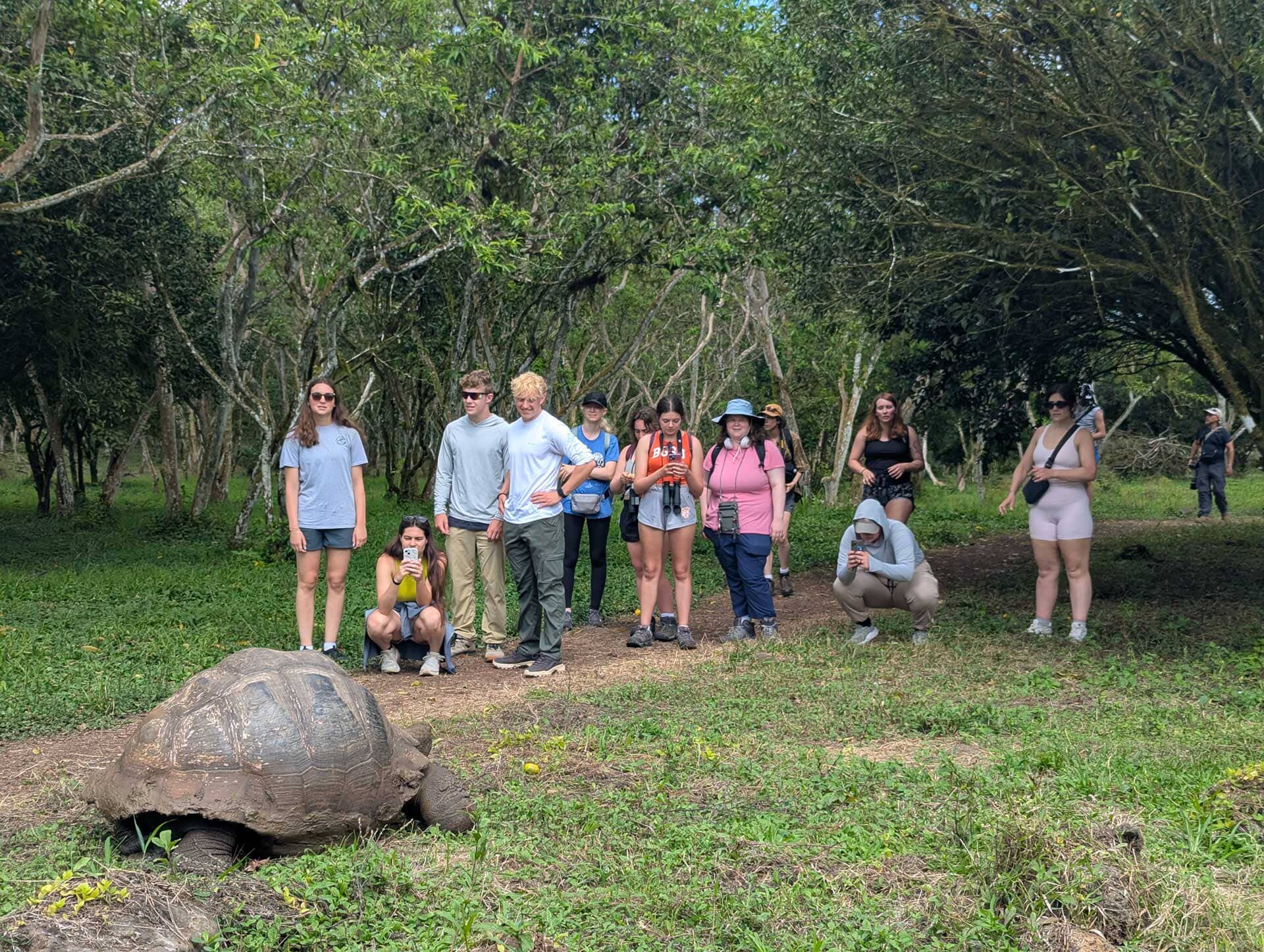
BGSU biology class travels to South America for memorable field experience
Estimated Reading Time:
Students experience Galapagos Islands and Ecuador on field experience led by BGSU professor and alumnus
Fourteen Bowling Green State University biology students experienced the trip of a lifetime while earning course credit to do so, spending two weeks in Ecuador and the Galapagos Islands through an adventurous summer class option.
Led by professor Dr. Juan Bouzat and aided by alumnus Gustavo Cañas-Valle ’24, a section of BIOL 4040 headed to South America to gain field experience in biodiversity and the environment.
Students traveled to Quito, the Ecuadorian capital, traversed the Andes Mountains, learned about pre-colonial cultures, saw the Islands made famous by Charles Darwin, studied some of the most unique ecosystems on Earth and even observed the elusive spectacled bear — the only bear species remaining on the continent.
Adding to classroom-based learning, the visit provided a robust two-week experiential learning opportunity, a key part of the student experience at BGSU.
“It’s important to learn in the classroom and have base levels of knowledge, but it’s totally different when you actually get to experience it for yourself,” said senior Liz Diehl. “It really did feel very special. The Galapagos Islands have a lot of animals and creatures that are endemic to the islands — they’re only found there. It was surreal knowing you might never see some of those animals again.”
In addition to experiencing a new culture in Ecuador, students learned firsthand about Bouzat's internationally recognized research on the evolution of coloniality in Andean hummingbirds and the conservation of genetic diversity in Galápagos penguins.
On the trip, students had the chance to interact with some of the most unique biological species in the world and learn firsthand about pathways into graduate research. They observed Darwin’s finches, the famous Galapagos Giant Tortoise, penguins, the flightless cormorant and even fed hummingbirds by hand.

“Always, the highlights of experiences like these are the interactions with species in very close situations,” Bouzat said. “Seeing animals up close like that is something that amazes the students. In Quito and the surrounding ecosystem, we had the interaction with the spectacled bear, got to feed wild hummingbirds out of their hands and really saw the diversity of bird species.”
Students took small planes from Ecuador to the Galapagos Islands, home to the ecosystem Darwin observed in “The Origin of Species.”
Because of their remote nature, the islands became an evolutionary case study unlike few others on Earth — one with which BGSU students interacted during their trip.
“I think when people think of the Galapagos Islands, their mind immediately goes to finches since they represent natural selection and how animals adapt over generations, and they’re amazing in person, but the Galapagos Islands are so much more than that,” Diehl said.
“When we were snorkeling, I remember almost running into a sea turtle that was right in front of my face. You realize how diverse the science world is and how many different paths you can take to study all of the amazing things there are to find on Earth.”
The species on the islands are often as intrigued by humans as humans are with them, providing students a once-in-a-lifetime opportunity.
“In Galapagos, the species are tamer than you might expect,” Bouzat said. “There are very few natural mammalian predators, so the species let you get close to them. We had interactions with a lot of the species you might expect: penguins, blue-footed boobies and the giant turtles, which is often a highlight for the students.”
Each night while in South America, the group reconnected to discuss what they had observed each day, allowing to students to connect with the course in a profound way.
For many students who experienced biodiversity up close and personal, the trip provided a new perspective on their chosen field.
“It really re-ignited my love for biology and science in general,” Diehl said. “I always knew this was the path I wanted to take, but just being able to see such a wide variety of landscapes and animals had me saying, ‘This is so cool.’”

Related Stories
Media Contact | Michael Bratton | mbratto@bgsu.edu | 419-372-6349
Updated: 07/02/2025 11:28AM




